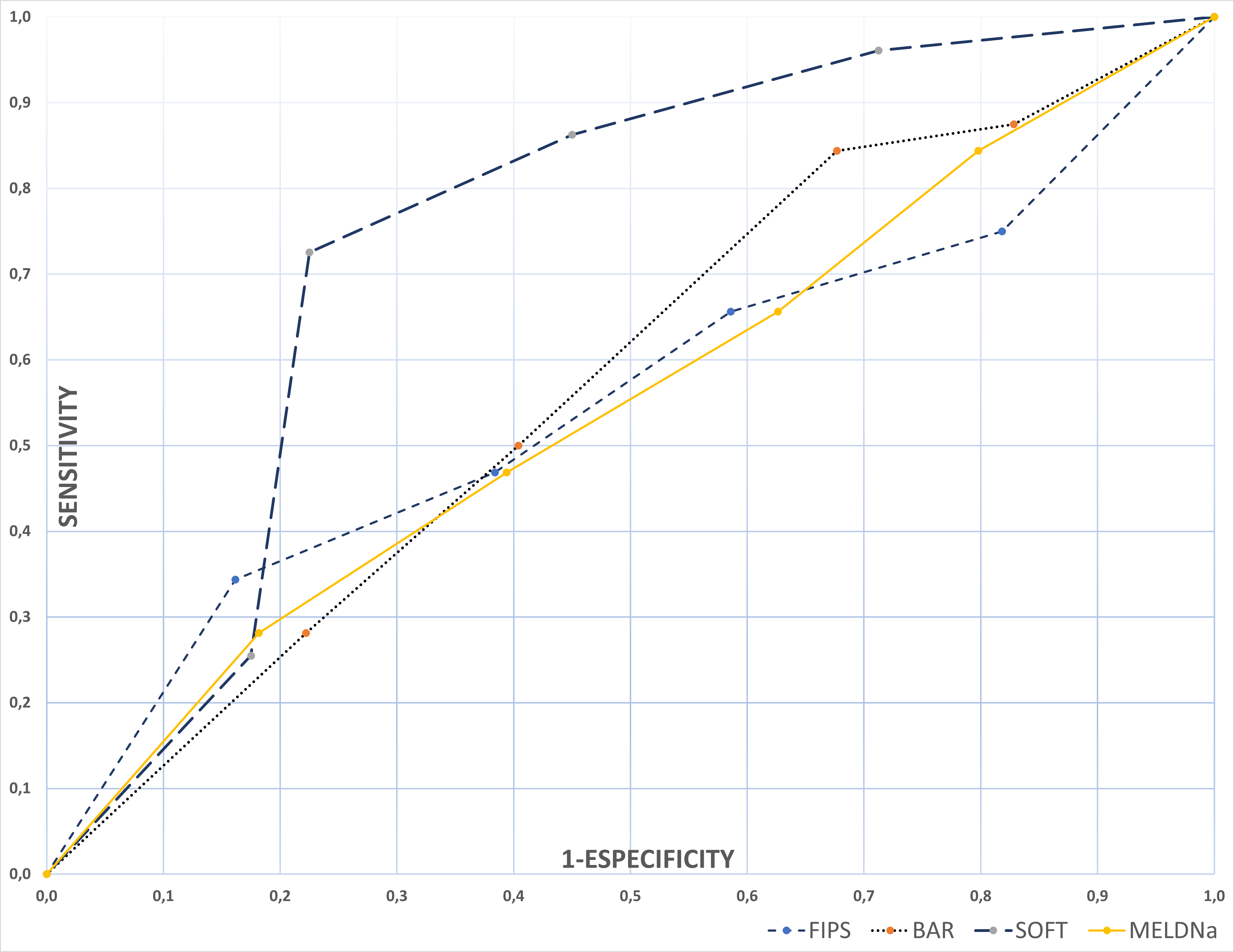
FIPS score as a predictor of 30-day mortality after liver transplantation – a comparison with validated risk scores (SOFT and BAR) in a Brazilian cohort of patients
Fabio Silveira1, Fabio Porto Silveira1, Cassia Regina Sbrissia Silveira1, Tatiana Luisa Shibata Facchi1, Ricardo Teles Schulz1.
1Liver transplant, Hospital do Rocio, Campo Largo, Brazil
CDTO - Centro Digestivo e Transplante de Órgãos.
Introduction: The novel Freiburg (FIPS) score was developed as a risk stratification and outcome prediction for patients undergoing transjugular intrahepatic portosystemic shunt (TIPS) – using patient age, bilirubin, creatinine and albumin. Model for end-stage liver disease (MELD) was originally developed with the same principle, after it was validated for liver allocation, incorporated the sodium levels (MELDNa) and finally was not useful to predict mortality after liver transplant. Identification of high-risk patients is an important marker of quality for public policy. Therefore, the aim of our study is to evaluate this score as a predictor of surgical (30-day) mortality post liver transplantation when compared with previous validated scores.
Method: retrospective study that compared four prognostic scores [Balance of Risk Score (BAR), MELDNa, Survival Outcomes Following Liver Transplantation (SOFT) and FIPS] in 131 patients (mean age 51,5±11,9 years; 25,95% female) submitted to primary liver transplantation between April 2016 and February 2021 in a Brazilian cohort of Hospital do Rocio. Acute liver failure etiology was excluded. A receiver operating characteristic curve (ROC), with its area under (AUROC), was built to investigate the best observation of the prognostic scores. The scores were splitted into quintiles. Youden index was used to determinate the best cut-off point for the risk index.
Results: surgical mortality occurred in 24,43% (n=32) patients. Mean FIPS (0,51±1,10); BAR (8,39±3,87); MELDNa (21,43±8,04) and SOFT (10,41±7,44). Originally high risk patients (FIPS>0,92) didn´t presented higher mortality (p=0,29). SOFT score represented better the observation as the area under the curve (AuC) was 0,81; with MELDNa (0,65); FIPS (0,65) and BAR (0,69) showing a not useful diagnostic accuracy. The best cut-off point for SOFT was in the second quintile (9-12).
Conclusion: Although not developed for this purpose, FIPS underperformed SOFT score as a prognostic index of 30-day mortality following liver transplantation in a brazilian cohort.

right-click to download
